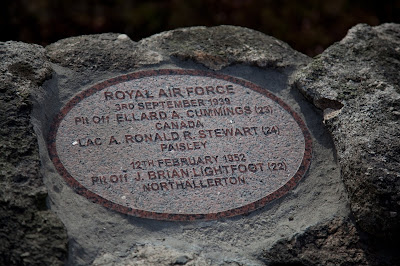Piper Alpha - by Duncan Harley
This week the Scottish papers are full of
supplements reflecting on the death of 167 offshore workers just 30 years ago
today and even The Times in Scotland carries
a splendid but short piece commemorating the event.
Tonight, a reading of the names of the dead is due to take place in Aberdeen’s Hazlehead Park.
Truly cataclysmic, Piper Alpha
represented a turning point in offshore safety.
Lord Cullen, in his two-year inquiry
into the tragedy, concluded that both engineering failings and a lack of basic
safety protocol had led directly to the deaths. The Piper Alpha platform was said to be ageing, rusting and unstable
and much was made of the claim that safety alarms were routinely ignored. In
the light of the Cullen Report, Health and Safety law underwent major changes
in the UK.
Offshore survival training became
mandatory and protective clothing compulsory. On top of that, rigs nowadays are
required by law to have quick escape routes to lifeboats. Amongst Lord Cullen’s
remarks was a tribute to the heroism of the diving crew: “These personnel were
efficiently and intelligently led and their orderly evacuation owes a lot to
the presence of mind of Mr MacLeod and Mr Barbour, the latter of whom perished
when making his escape to sea”. Stan MacLeod was later awarded the Queen’s
Award for Gallantry for his heroic actions on that harrowing day.
The Piper Alpha Memorial in Aberdeen’s Queen Mother's Rose Garden within Hazlehead Park was unveiled by Her Majesty the Queen Mother on July 6, 1991. Modelled along the lines of the Commando Memorial at Spean Bridge, artist Sue Jane Taylor initially set about designing a plaster moquette for submission to the city council. Her proposal was accepted. Funding came from many sources and, alongside a good few private donations from survivor’s groups, the £100k target was eventually reached following a contribution from the Scottish Office of £40k. The three human sculptures required for the memorial were created over at The Scottish Sculpture Workshop at Lumphanan.
The Piper Alpha Memorial in Aberdeen’s Queen Mother's Rose Garden within Hazlehead Park was unveiled by Her Majesty the Queen Mother on July 6, 1991. Modelled along the lines of the Commando Memorial at Spean Bridge, artist Sue Jane Taylor initially set about designing a plaster moquette for submission to the city council. Her proposal was accepted. Funding came from many sources and, alongside a good few private donations from survivor’s groups, the £100k target was eventually reached following a contribution from the Scottish Office of £40k. The three human sculptures required for the memorial were created over at The Scottish Sculpture Workshop at Lumphanan.
A small urn containing ashes of
victims was incorporated within the sculpture.
As Sue later recalled: “The roustabout figure which faces west represents the physical nature of many offshore trades. The survival-suited bronze figure facing east represents youth and eternal movement and the central bronze figure represents maturity. In his left hand he holds a pool of oil. His right-hand points to the ground, indicating the source of crude oil.”
As Sue later recalled: “The roustabout figure which faces west represents the physical nature of many offshore trades. The survival-suited bronze figure facing east represents youth and eternal movement and the central bronze figure represents maturity. In his left hand he holds a pool of oil. His right-hand points to the ground, indicating the source of crude oil.”
Curiously, there are claims that the
oil rig’s owners Occidental Petroleum declined
to contribute to the Hazlehead memorial sculpture and may even, according to
some commentators, have gone so far as to discourage other oil exploration
companies from picking up any of the tab on the basis that such a lasting
monument would be a constant reminder of the failings of the industry in their
duty of care for their workforce. PR objectives had perhaps triumphed over duty
of care.
One
survivor of the disaster, his name was Bob Ballantyne, infamously went so far
as to write to the Occidental CEO, Dr Armand Hammer, suggesting that the company
might consider donating the scrap value of the burnt-out accommodation module
to the memorial fund.
Unsurprisingly perhaps, Dr Hammer did not respond.
Unsurprisingly perhaps, Dr Hammer did not respond.
Words and image (c) Duncan Harley
Duncan Harley is author of The A-Z of Curious Aberdeenshire plus the forthcoming title: The Little History of Aberdeenshire - due out on1st March 2019. Both titles can be ordered via Amazon.
Duncan Harley is author of The A-Z of Curious Aberdeenshire plus the forthcoming title: The Little History of Aberdeenshire - due out on1st March 2019. Both titles can be ordered via Amazon.











Comments
Post a Comment